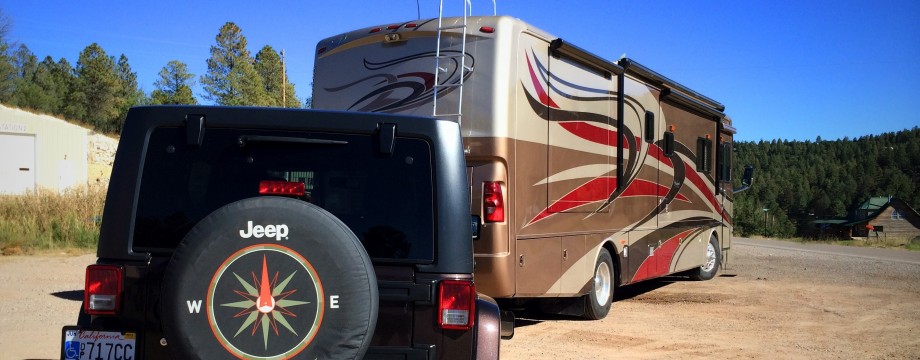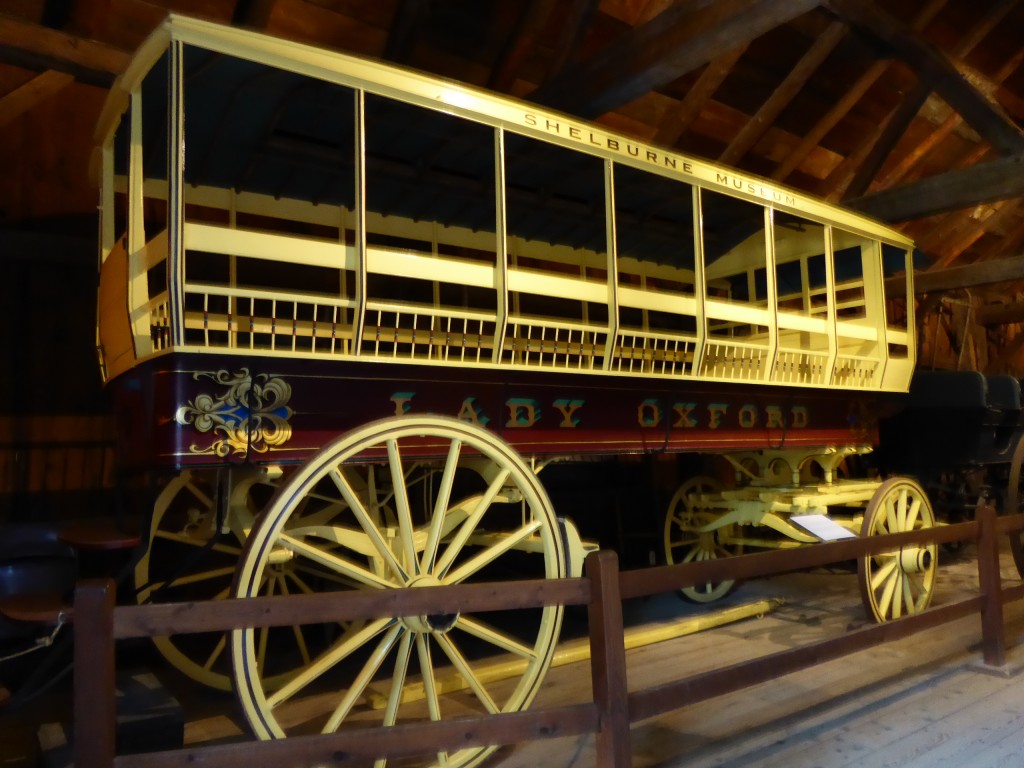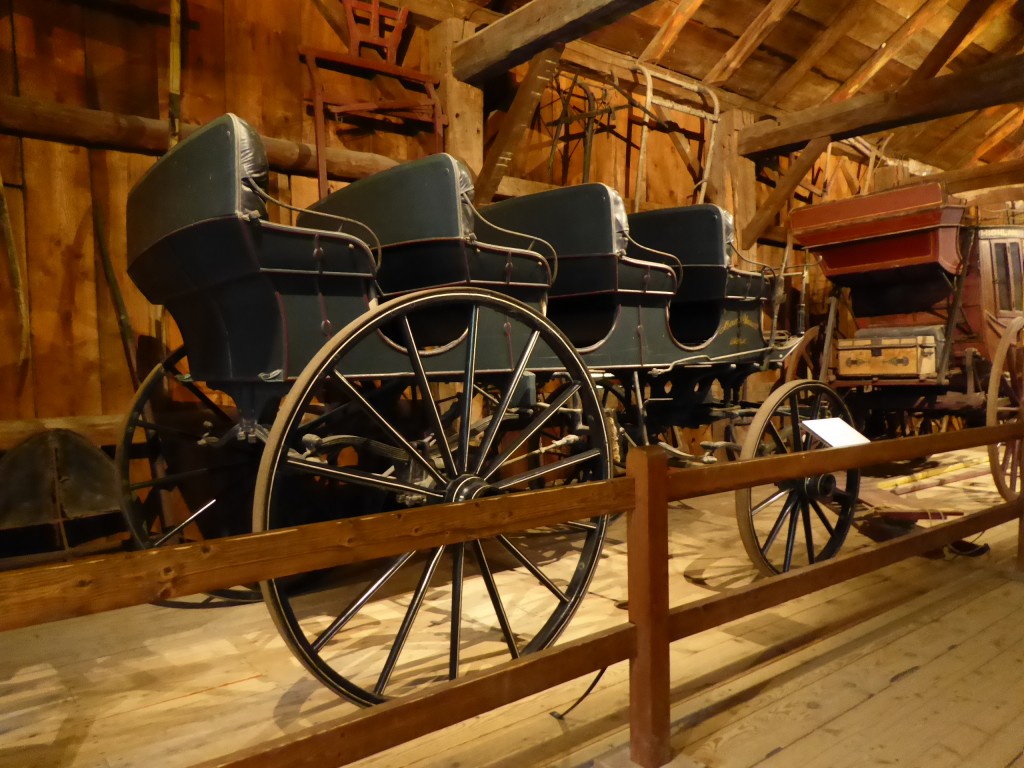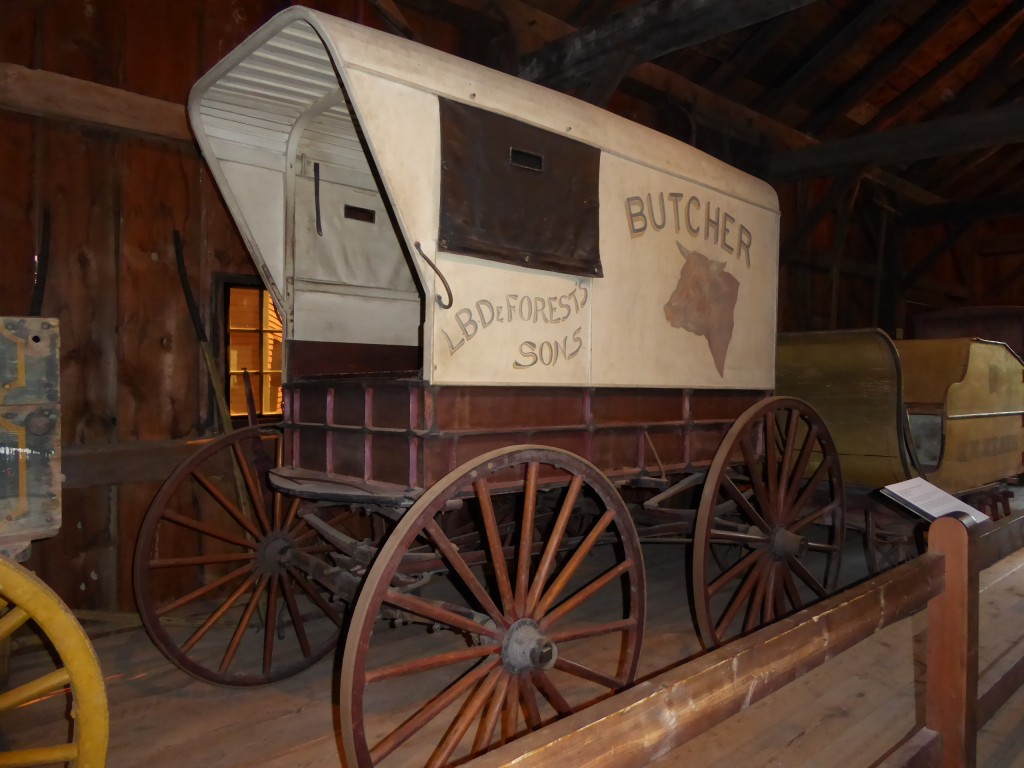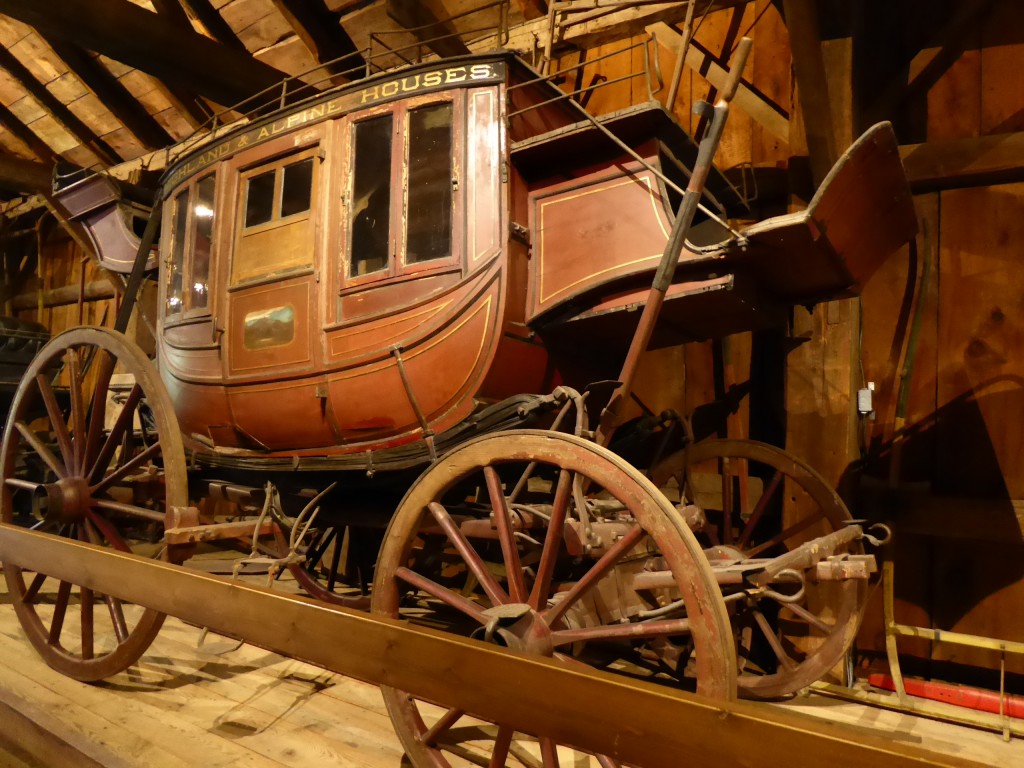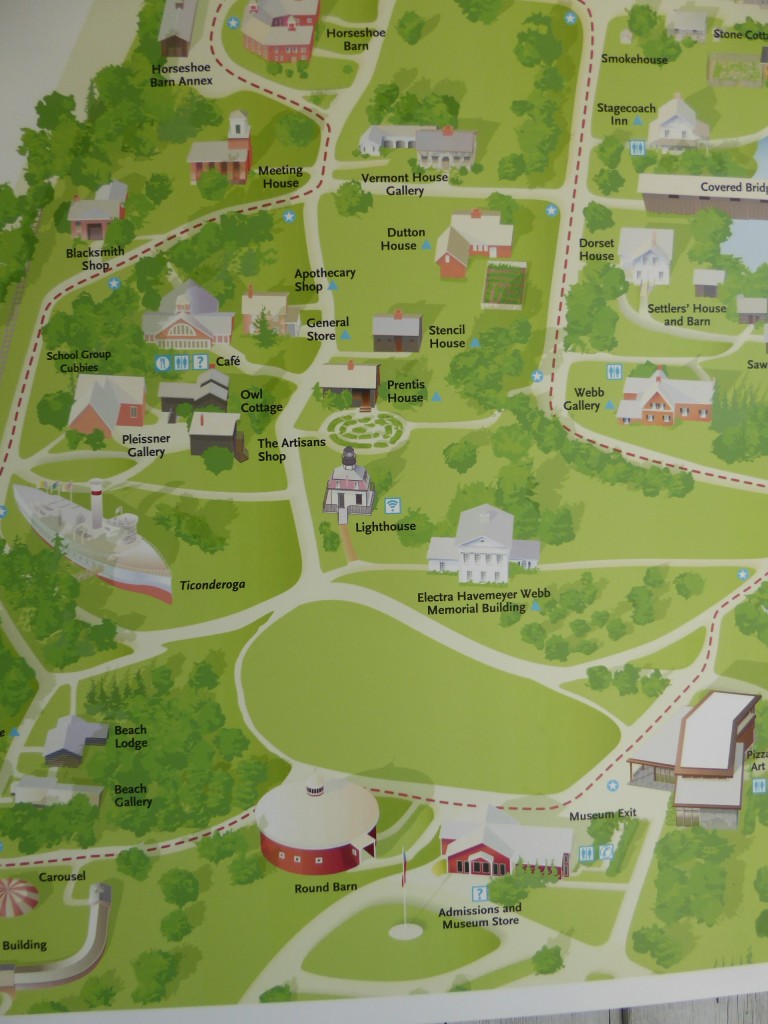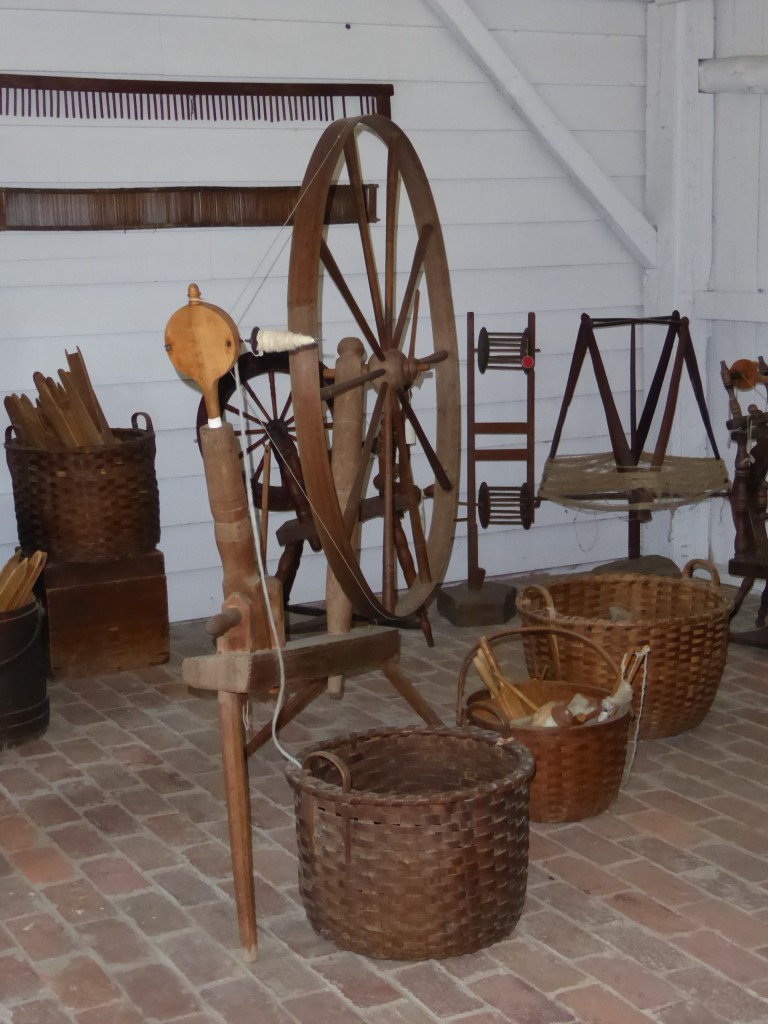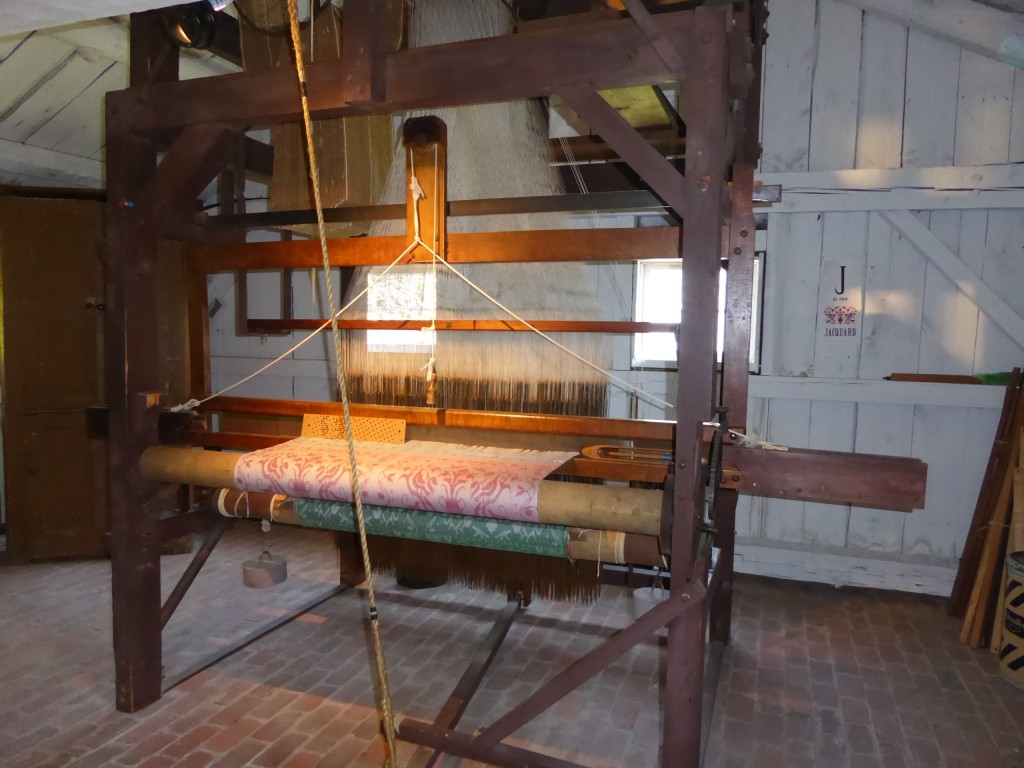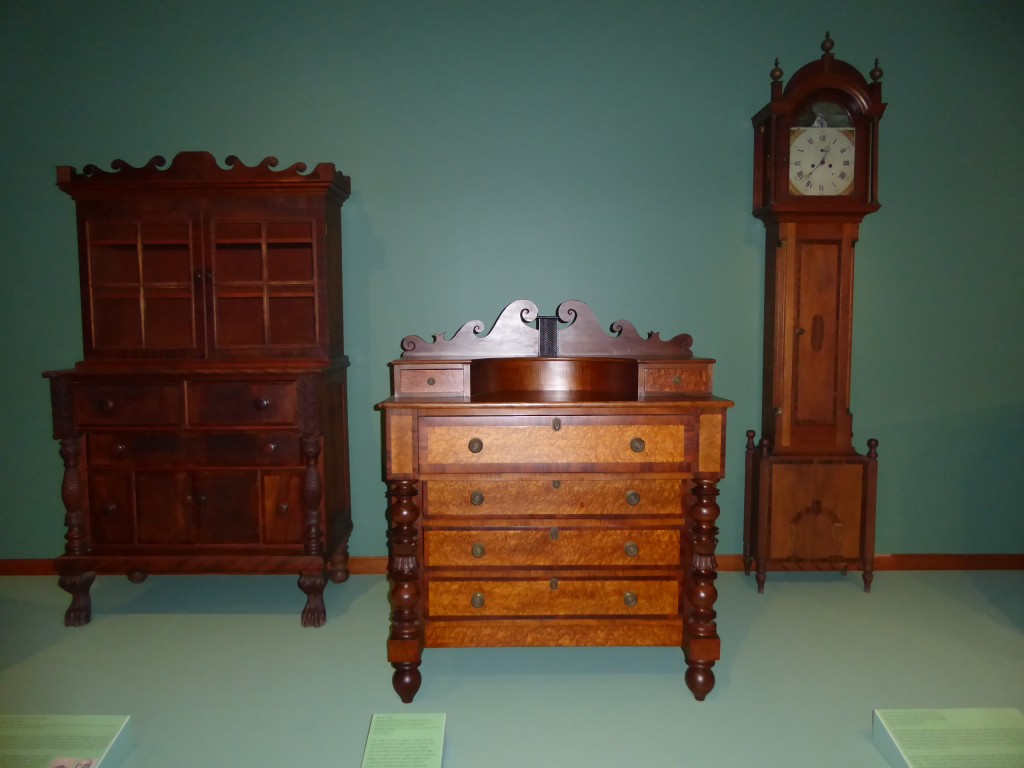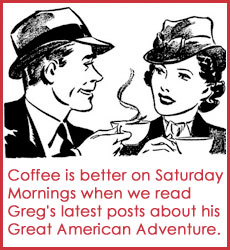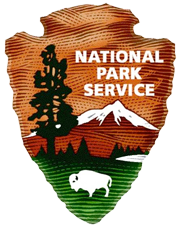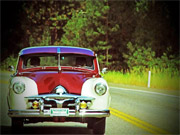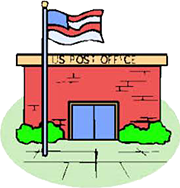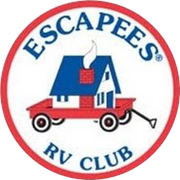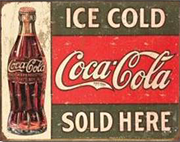LABOR DAY. SEPTEMBER 7, 2015.
IT’S BACK TO SCHOOL TIME. RV’s were pulling out of Apple Island Resort this morning like rats leaving a sinking ship! After a long summer vacation lots of kids return to school on the day following Labor Day, and of course many still-employed folks must get back to work after the long weekend as well. That leaves us with an RV park to ourselves. It’s nice not having to fight crowds or be concerned about having reservations for “the next place down the road.” And from what the locals have told me, by the first week in October when we start heading to Gulf Shores for the winter, we should have smooth sailing all the way to Alabama. Super!
DAY TWO AT SHELBURNE MUSEUM. You’ll recall from my post yesterday that Shelburne Museum near Burlington is a one-of-a-kind, gem of a place…one of America’s most popular repositories for eclectic artifacts. There are so many tempting exhibits and collections that we decided to spend a second afternoon looking around there, and we did so today. Before giving you a glimpse of what we saw, let me tell you once again: “If you’re in Vermont, do yourself a favor and visit this wonderful museum. You won’t be disappointed.”
WEATHER SLOWED US DOWN A BIT. As to our visit today, the weather slowed us down a bit. By mid-afternoon the thermometer had reached 92 degrees and the humidity was getting up there, too. Most of the old historic buildings aren’t air conditioned and even though a shuttle passes about every 15 minutes to assist visitors in getting around the grounds, there’s still a substantial amount of walking involved. It was just too hot to see as much as we’d planned. What we did see, though, was notable.
THE COLLECTION OF CARRIAGES
More than 200 carriages and horse-drawn vehicles are exhibited in the Horseshoe Barn. Sleighs, stagecoaches and commercial wagons are also here for close-up examination. Some of the carriages exemplify the very finest-quality luxury transportation available at the time. And others, used by those of ordinary means, could be had from Sears, Robuck for $29.95. Nearly every type of vehicle used in New England during the late 19th and early 20th centuries is represented.
David Horace Buxton, a druggist and general store owner in Abbot, Maine suffered greatly from rheumatism and in his search for relief, stumbled upon a “cure-all” that he decided to market commercially. Buxton’s “Cure-All” claimed to relieve not only rheumatism but also virtually every other ailment known to man. From 1894 until the 1930’s, when federal restrictions began to affect business, Buxton’s “Cure-All” was a phenomenal success. It was shipped all over the United States by mail and marketed to drug stores in the Northeast with this wagon.
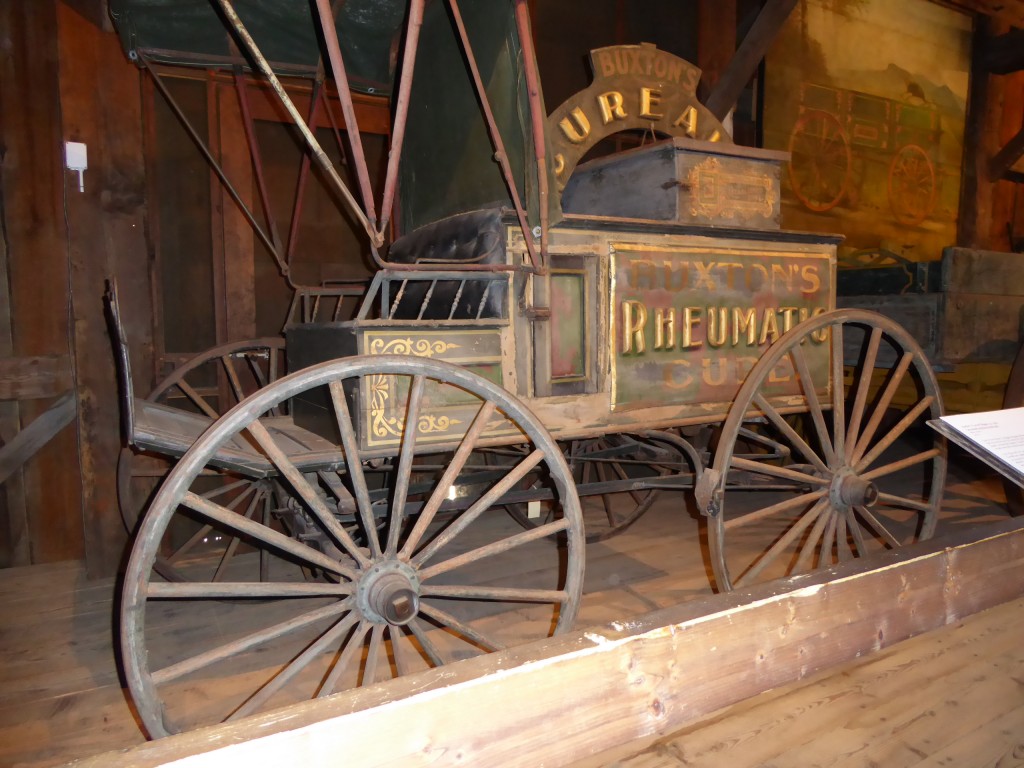
David Buxton, a druggist, distributed his “Cure-All” medicine all over the Northeast from this cart. It was a phenomenal success! Maybe it wasn’t snake oil after all.
The Stage Sleigh provided a means of public transportation when winter snows made it difficult for horses to pull a stagecoach. The Stage Sleigh was a large, glassed-in box, with runners and a seat for the coachman outside. This sleigh was used for more than 100 years to carry passengers between Worcester and Lowell, Massachusetts.
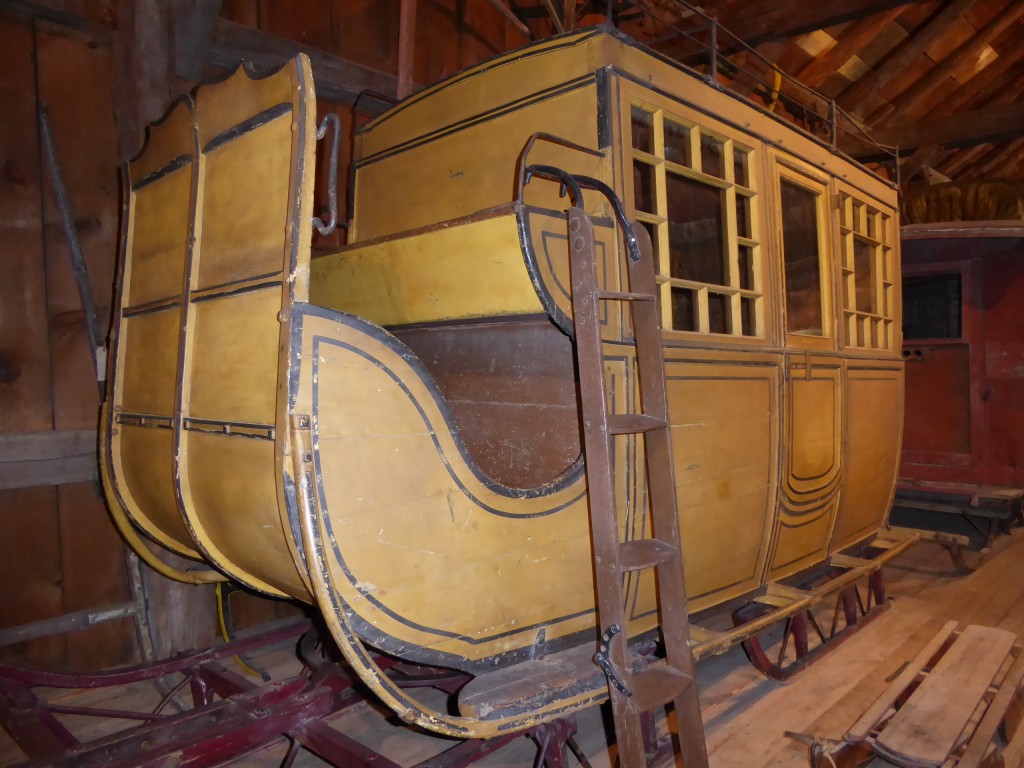
The Stage Sleigh was used for public transportation when winter snow prevented horses from pulling carriages.
The Ice Wagon made deliveries two or three times each week during the time when oak iceboxes were used to store perishable food. A card in the home window alerted the deliveryman to the home’s need. The ice man chipped an appropriate size block of ice and used tongs to place it in the oak box. Believe it or not, it wasn’t until about 1950 that the average American home had an electric refrigerator.
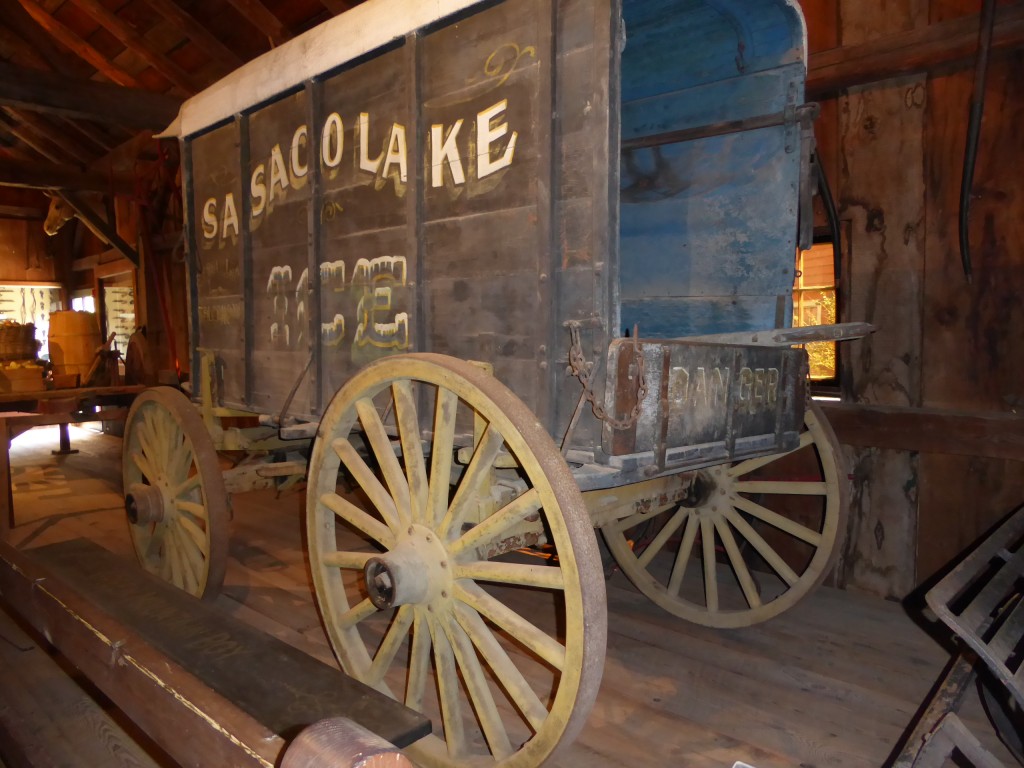
A card placed in a home’s window alerted the delivery man that a block of ice was needed for the oak icebox.
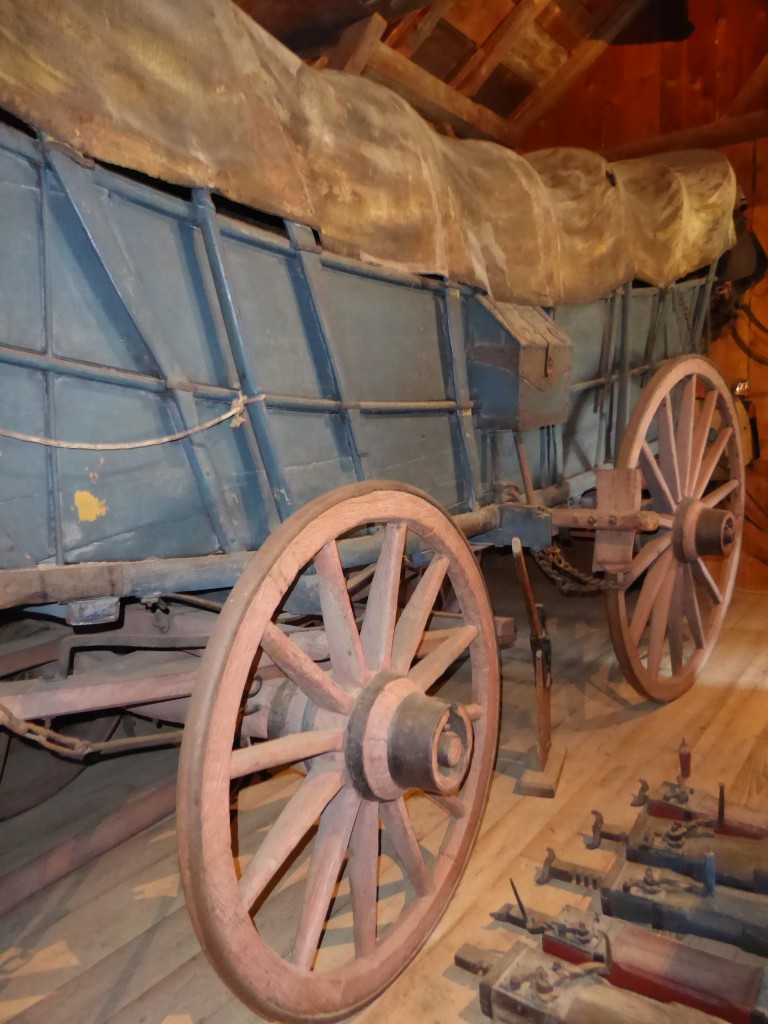
Do you know the difference between a Conestoga Wagon and a Prairie Schooner? I do. Remind me to explain it to you some day. Or, visit the Shelburne and learn for yourself.
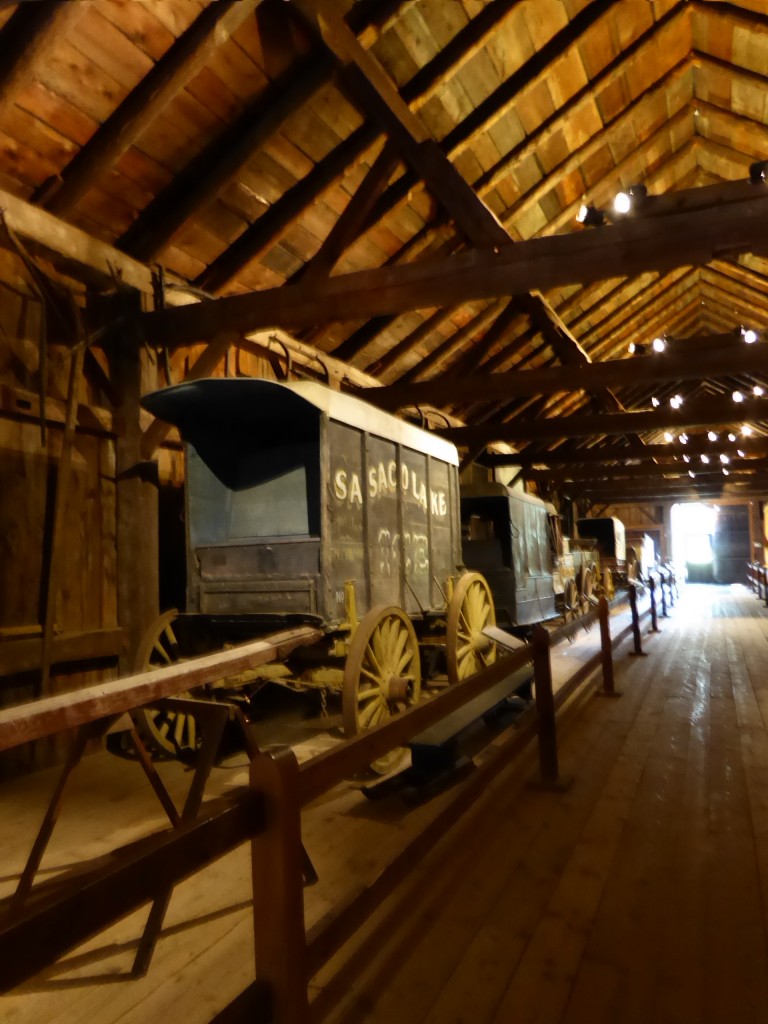
This photo shows the layout of the Carriage Barn. The vehicles are displayed on either side of a long building, with a walkway in between and lots of space to “get up close and personal.”
Teams of six horses or mules in leather harnesses pulled the heavy Conestoga Wagons. The Wagon Master never rode in the wagon, but instead, walked on the left side of the wagon near the front wheel. Brass bells were an addition to harnesses and teamsters took great pride in them. If his wagon broke down on the road or had any other misfortune that required assistance, he had to relinquish his bells to the one who assisted. So it became a point of pride to arrive at the destination with all the bells intact. Hence, the old phrase, “I’ll be there with bells.”
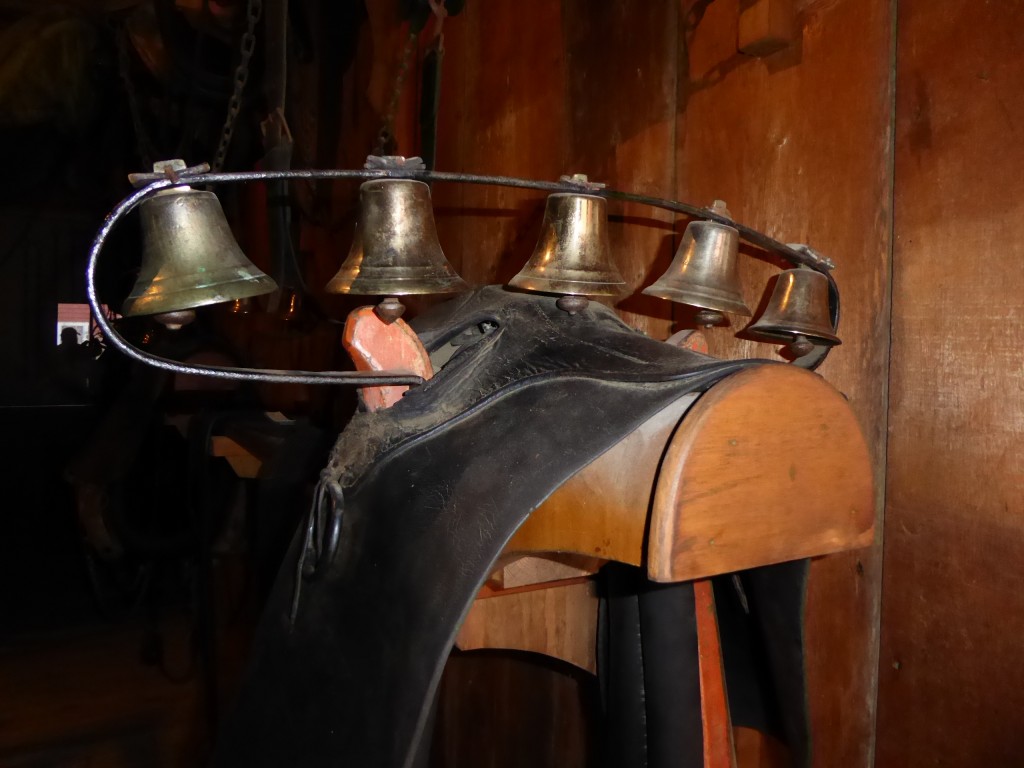
Arriving at the destination with all his harness bells was the goal of the Wagon Master. Read about it.
Riding a Country Sleigh was an expensive way of getting around town in early New England. Here’s one reason why: In the 19th century, paint was expensive, so it was used sparingly. Richly decorated surfaces, however, were common on these sleighs, because snow was less abrasive on the painted surfaces than the mud and dirt generated during the Spring, Summer and Fall on the dirt roads of the time.
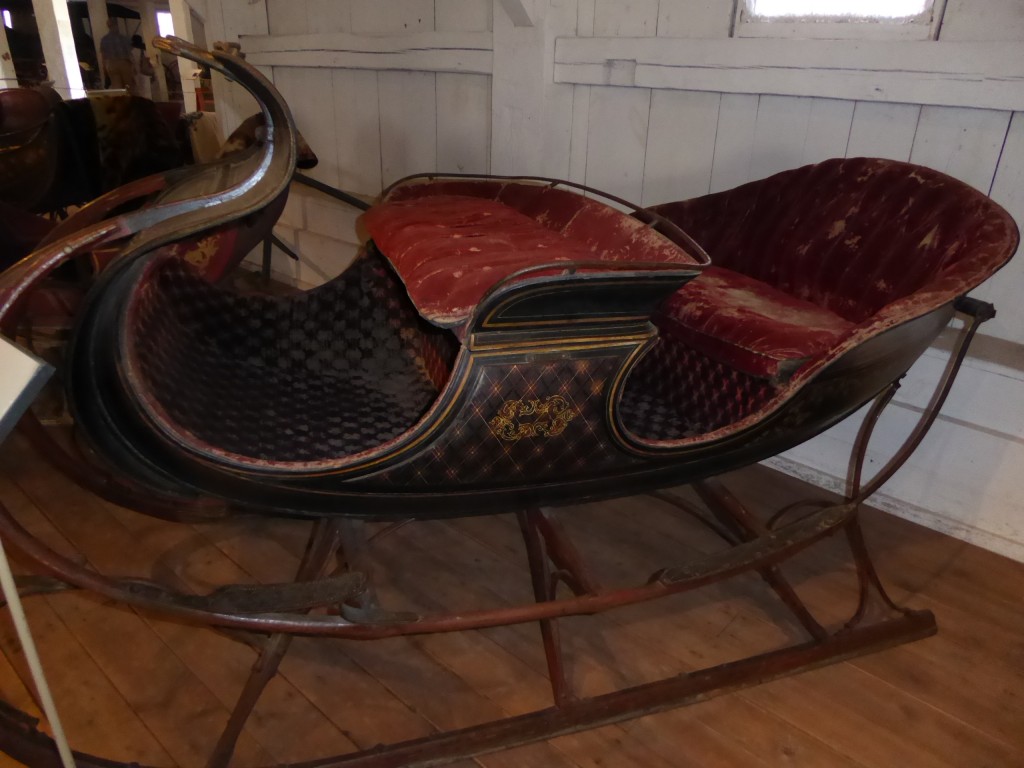
Country Sleighs like this one were expensive. You can see that even now, can’t you? I can almost picture in my mind’s eye the kind of guy who’d ride around town in one of these. Certainly a wealthy guy…probably a dandy.
This next cart I’ll show you is particularly interesting. It’s called a “Dog Cart,” and it was originally used in England to transport dogs and game for hunting. A door opens the boot, or storage compartment, for hunting dogs to be placed inside. There are vents on the sides to provide ventilation. These carts were difficult to drive so in addition to being used on Fox Hunts, they were also driven competitively just for sport, without the involvement of the hunt.
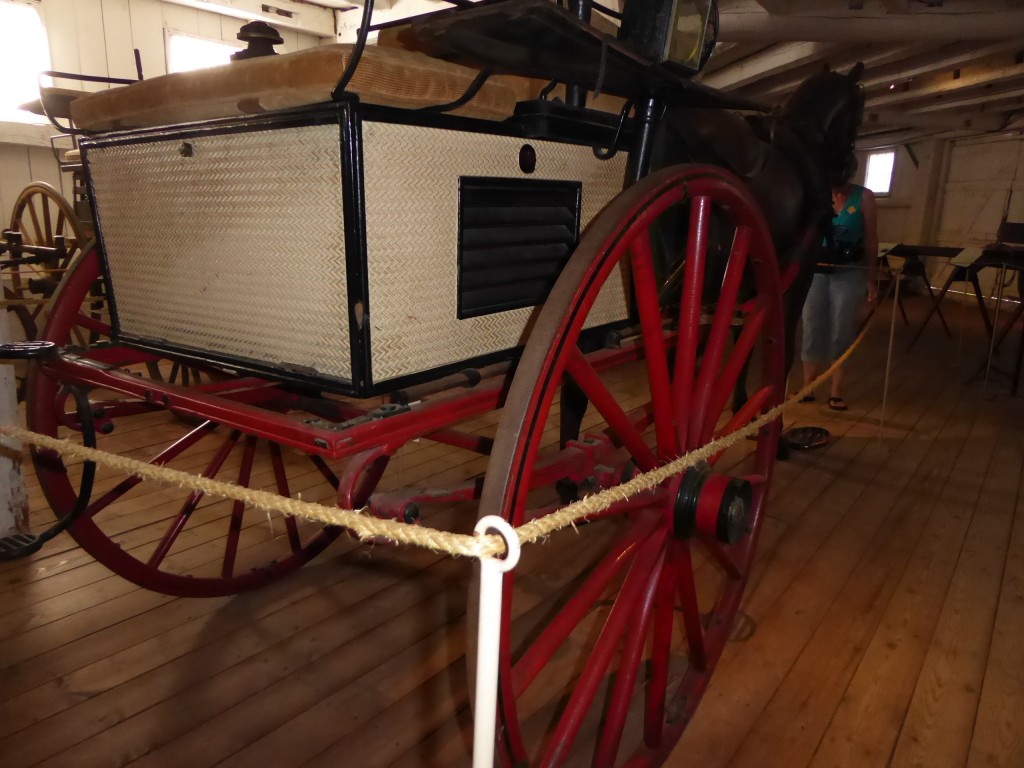
This is a Dog Cart, used to transport dogs for fox hunts. These carts were also driven competitively, because it took a good deal of skill to operate them. I don’t understand why…they look like just ordinary carts to me.
Here’s a map of the museum grounds, next to a photo of an antique loom used in early New England times. As you can see if you enlarge the map, there is a lot of walking required to reach all the exhibit buildings. Remember, they’re spread over 45 acres of museum property! Because of the heat today, we ran out of steam a little early. But we’ve had a chance during the last couple of days to experience much of what this museum has to offer and we’re happy about that. Who knows, perhaps we’ll return here one day and continue looking around these old buildings. I don’t see our Great American Adventure drawing to a close any time soon!

This is one of about 38 historic buildings that house the exhibits and collections at the museum. It’s a large building. As you can imagine, lots of collections can be housed in all those buildings!
A new Center for Art and Education was completed in 2014. It’s a year-round facility with two galleries, an auditorium and classroom space…a regional cultural resource for art, music, film, lectures and symposiums. Before the Center opened, Shelburne Museum was dormant from November through Mid-May each year, because of the severe winter weather. Today, one of the galleries in this new building has a collection of early American Vermont furniture called “Rich and Tasty: Vermont Furniture to 1850.” And in the other gallery, the collection of artwork currently on display is named, “American Moderns, 1910 – 1960: From O’Keefe to Rockwell.” Here’s just a glimpse of what we saw in this beautiful new (air conditioned) building.
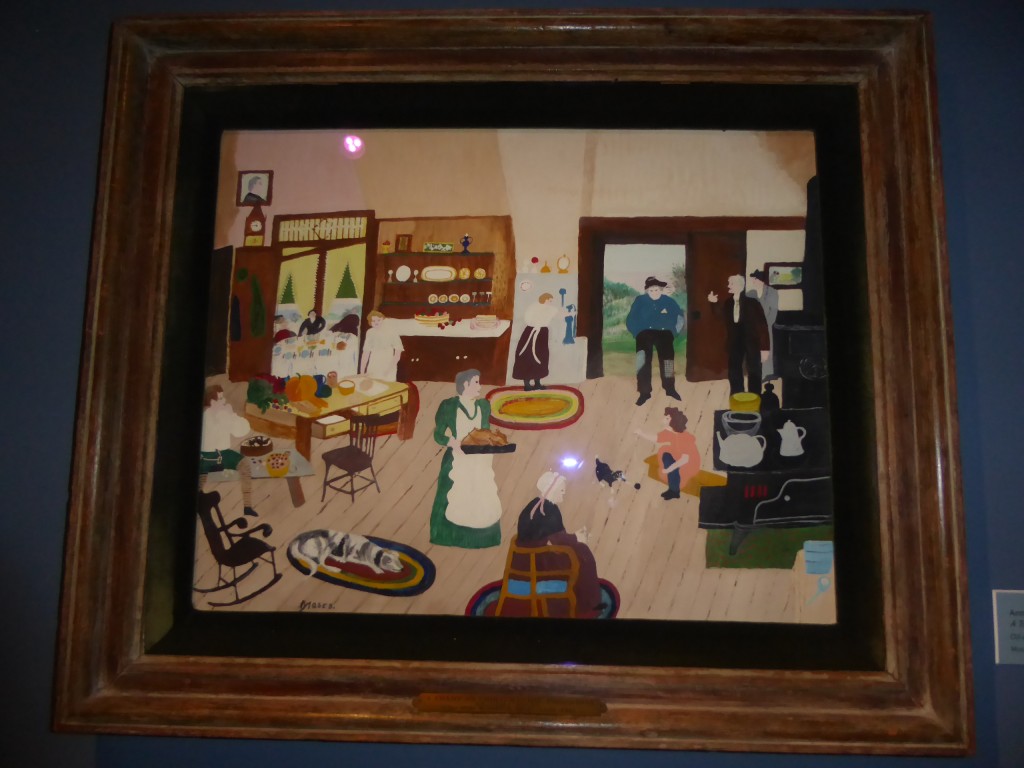
Anna Mary Robertson Moses, known by her nickname “Grandma Moses,” was a renowned American folk artist. You’ve heard of her. She painted this piece and the next one I’ve displayed below. There was also a Norman Rockwell painting on display, but the lighting wasn’t good enough for me to get a photo. Flash photos are of course not allowed.
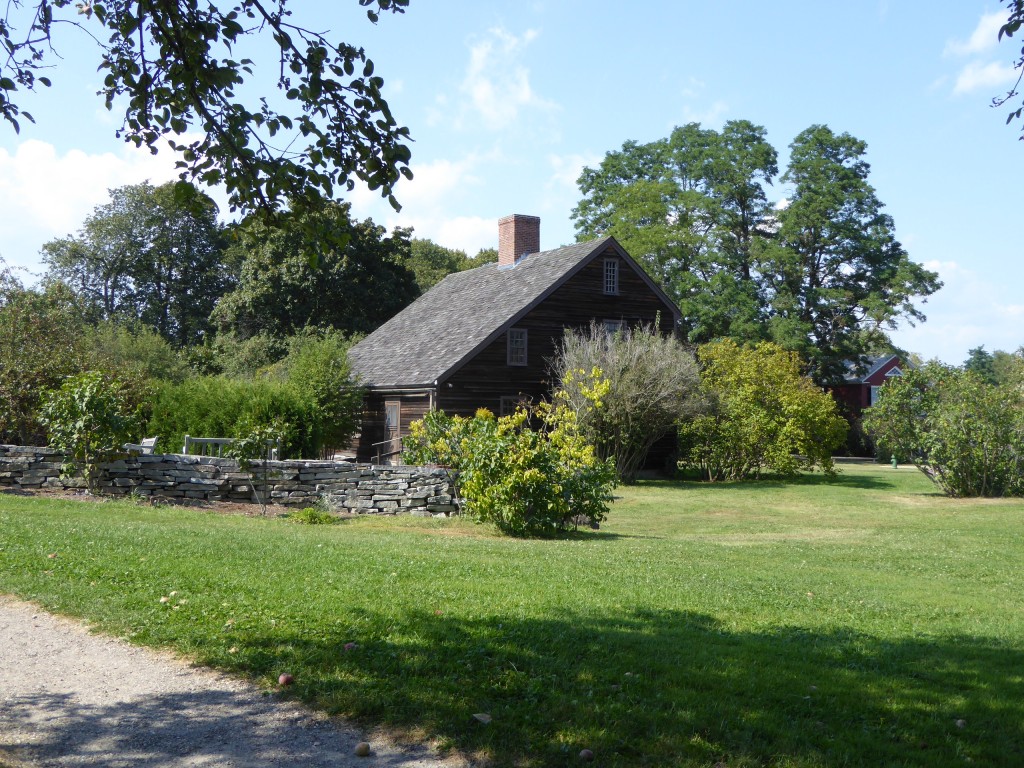
It’s time to say good-bye to the Shelburne Museum and the historic old buildings like this one where the collections are kept. This attraction would be well-worth a return visit some day!
THANKS FOR JOINING US. I’LL CONTINUE MY STORY NEXT TIME.


